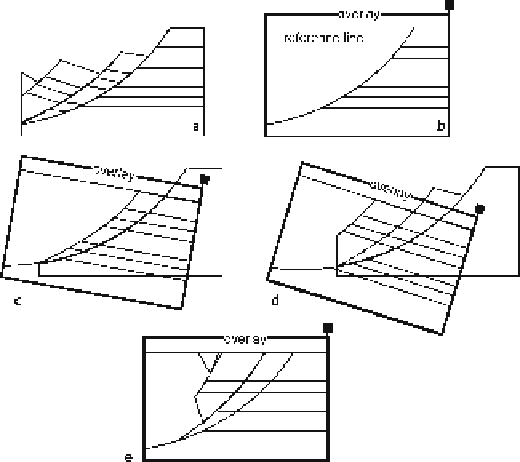Geology Reference
In-Depth Information
11.5
Rigid-Body Displacement
This section begins the presentation of the kinematic-model-based restoration and
prediction techniques. If all the deformation is by the displacement of rigid blocks,
then a cross section can be restored by rigid-block translation and rotation. Rigid-
body displacement preserves all the original lengths and angles within the blocks on
the deformed-state cross section. This method is suitable for cross sections consisting
of internally undeformed fault blocks, most commonly found in extensional structural
styles. The sequential restoration of the Rhine Graben (Fig. 11.9) was done by rigid-
body displacement.
11.5.1
Restoration
Rigid-body restoration can be done by cutting the cross section apart on the faults,
removing the offsets, and reassembling it so that the reference horizon has the required
restored shape. An analogous strategy works with computer-drafting programs. The
restoration can be done on paper without cutting by tracing the blocks on a transpar-
ent overlay (Fig. 11.23). Draw the pin line, the restored-bed reference line, and the foot-
wall on the transparent overlay. Move the overlay so that the first block is in its re-
stored position and trace it onto the overlay. Then move the overlay so that the second
block is in the restored position and trace it. Repeat this step until the section has been
restored. If the blocks do not fit together perfectly, it is preferable to leave gaps be-
tween them, rather than to overlap the blocks.
Fig. 11.23.
Restoration of rigid-body
displacement by the overlay
method.
a
Section to be re-
stored.
b
Preparation of the
overlay.
c
Restoration of the
first block.
d
Restoration of
the second block.
e
Complete
restoration

